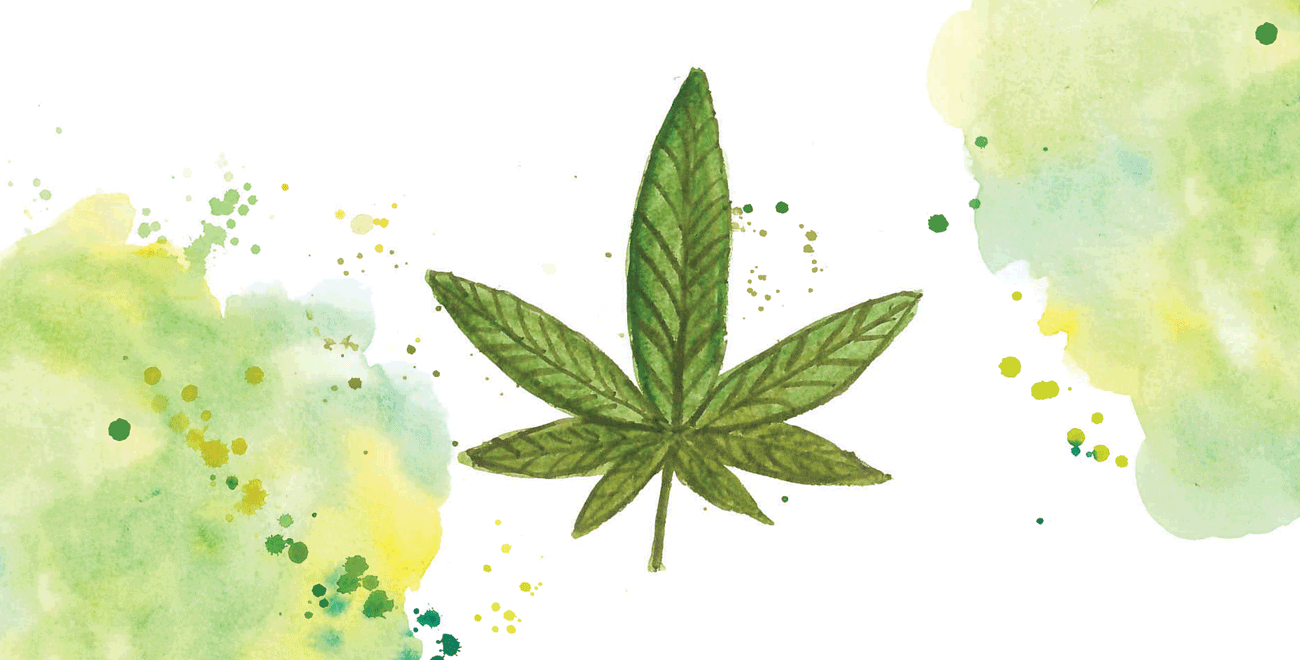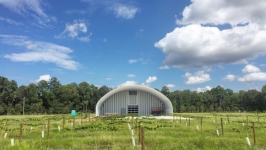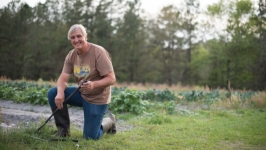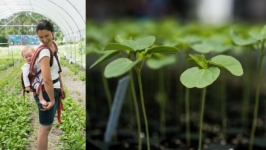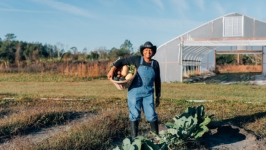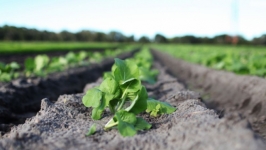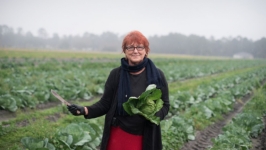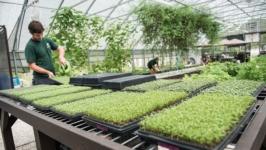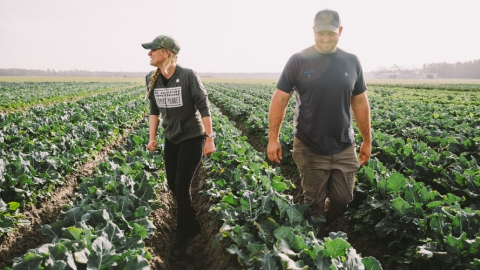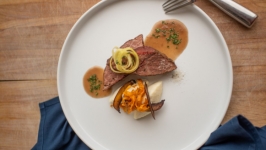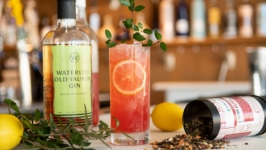Hemp Farming on the Horizon
Hemp, a non-intoxicating variety of the cannabis plant with a multitude of uses, is making a comeback in the Sunshine state. Soon, the leafy green flowering plant may be popping up in farm fields across Florida.
Arguably, hemp was the first collateral casualty of the federal government’s war on marijuana. Though it cannot induce a high, the variety was deemed outlaw produce alongside its more potent cousins with the passage of the 1937 Marihuana Act (yes, it’s spelled that way) and subsequent bills that taxed, regulated and legislated cannabis from American farms. For more than 70 years, hemp, which once provided everything from fiber for textiles to oil for paints, remained flora non grata in the United States.
That started to change in 2014, when the federal farm bill sanctioned universities to research hemp. In 2018, the updated U.S. Farm Bill legalized hemp, and now the once stigmatized plant has the potential to stimulate a billion dollar industry.
In Florida hemp research is being spearheaded by the University of Florida’s Institute of Food and Agricultural Sciences (UF/IFAS) Florida Agricultural Experiment Station. The station is tasked with overseeing the state’s Industrial Hemp Pilot Project, which hopes to identify viable strains, farming practices and locations for future hemp growing.
“It’s an exciting time for us,” said Jerry Fankhauser, the pilot project’s manager. “We’re dealing with a crop that was essentially outlawed for 70 years.” Currently, the project is growing hemp in three locations across the state: in the Panhandle, near Gainesville and in a tropical research center near Homestead. “We’re trying to do field production sites in varying climates and locations across Florida,” said Fankhauser. The project has permits to grow in nine other research centers, including a location near Hastings.
“We’re trying to see what this multi-use crop may be able to provide for growers and the industry,” said Fankhauser. Hemp produces fiber, seeds and oil. It contains 113 chemical compounds known as cannabinoids, and is particularly rich in cannabidiol (CBD), a mellowing, non-psychoactive compound. Hemp contains less than .3% THC, the compound that causes a high.
CBD extracts are currently the plant’s dominant use, but there are many others. Hulled hemp seeds, or hearts, are an excellent source of protein and are rich in omega-3 and omega-6 fatty acids, which promote heart health and brain function, lower triglycerides, reduce muscle inflammation and support healthy immune systems. Hemp hearts contain around 30% oil by weight and their nutritional content is highest in their raw state. They can be eaten or milled into flour or powder. They can also be used for extracting cooking oil and can be processed into uses like tinctures and balms. Hemp powder can even be mixed with water to create hemp milk. Hemp fiber has long been used in textiles and is now even being adapted for building materials – a mix called hempcrete – and possible plastic replacers.
One of hemp’s strongest benefits may be environmental. It is touted for its value as a cover crop – a plant that renourishes and protects the soil, rather than depleting it. In Florida, it may be well-suited to a healthy crop rotation along with other produce, or restoring overworked soil. Scott Meyer, owner of Jacksonville farm Congaree and Penn, said, “incorporating that as part of your regenerative operation, to keep roots and keep all that biota in the soil would be huge.”
Following the research phase, the state government will begin permitting hemp for commercial growing. The Florida Department of Agriculture and Consumer Services is currently drafting a hemp plan and licensing structure, and local farmers are watching the process closely.
Meyer is one of the local farmers investigating growing hemp, in particular for its potential food uses. He sees opportunity in selling raw hemp hearts as well as extracting oil and feels hemp may be a good fit for Congaree and Penn as the farm has its own milling operation. A hulling machine used for rice and quinoa would be perfect for milling hemp seeds. “From a milling perspective, hemp and quinoa are pretty much the same size, so it works really well,” Meyer said.
Congaree and Penn also has equipment for extracting oil from grain. Meyer believes that oil and products that can be made from hemp, like tinctures and balms, could present a fertile opportunity. “A large part of what I do here is growing things, but then taking them to some sort of a value-added level. And I see this commodity has a lot of different elements to be processed.”
Danny Johns, a fourth generation potato farmer and owner of Blue Sky Farms in Elkton, is eager to get started growing hemp. He mainly foresees his farm growing hemp for CBD extraction. “That’s where the highest value is on the crop side,” said Johns. “We’re a commercial operation, so whatever has the biggest value and best potential for return is what we’ll be after. Right now that appears to be in the CBD oil side of things.” But he’s excited to explore hemp’s other uses. “There’s all-over potential for hemp, too.”
Johns believes the crop could bring some much needed diversity to Florida farming. “Anything that gives us diversity helps with sustainability in the area,” said Johns. “Having different crops that we can grow is definitely a benefit.”
While hemp has many uses, the market will determine the direction of farming, and currently, CBD products dominate. Local stores like Native Sun Natural Foods Market and Grassroots Natural Market sell a variety of hemp products, including both CBD extracts and food products, but CBD makes up the vast majority of hemp-related sales. “Nearly 93% of our total hemp-based sales are attributed to CBD products, so the other 7% are hemp-based food items,” said Meghan Fiveash, Native Sun’s customer program manager. In fact, “CBD sales are actually 2.3% of our total store sales year-to-date.” James Robison, the owner of Grassroots, reports a similar proportion in his stores' sales. “Probably easily like 90% CBD hemp extracts and 10% hemp protein, seeds, milk, etc.,” said Robison.
This breakdown will shape the way the plant is grown in Florida. “CBD production is a different kind of system than grain and fiber,” said Fankhauser. “In Florida it may involve plants in raised beds with drip irrigation, maybe with plasticulture, [the practice of using plastic materials in agricultural applications], like you see with Florida strawberries.” Additionally, while CBD is extracted from the flowers of unpollinated female plants, “you’re going to have a combination of male and female plants in a grain and fiber production system. They’re not getting CBD from the grain of industrial hemp.”
Fiveash of Native Sun also notes that hemp is still more heavily regulated than other crops. “Unfortunately, I think this may hinder the hemp-based food categories, since the raw materials and resources will likely be diverted to CBD,” she said. “But hopefully, as the CBD success levels out, we will be on the other side of a decades-long battle to look at this plant in the same way we look at corn, or potatoes, or cotton.”
Fankhauser similarly believes the market will evolve once permits are available and producers really get started exploring hemp’s various uses. “That’s kind of the chicken and the egg, because the industry is not established yet, especially on the grain and fiber side,” he said. “It’s going to be interesting to see once these permits are available.”
Whatever the market looks like now, hemp is much more than CBD. If Florida’s hemp plan progresses as expected, this versatile plant and its many uses will take its rightful place as a major fixture of the state’s farm economy. And that’s a benefit for everyone. As Danny Johns says, “anything that gives us a chance to keep doing what we’re doing – farming – is a good thing.”


